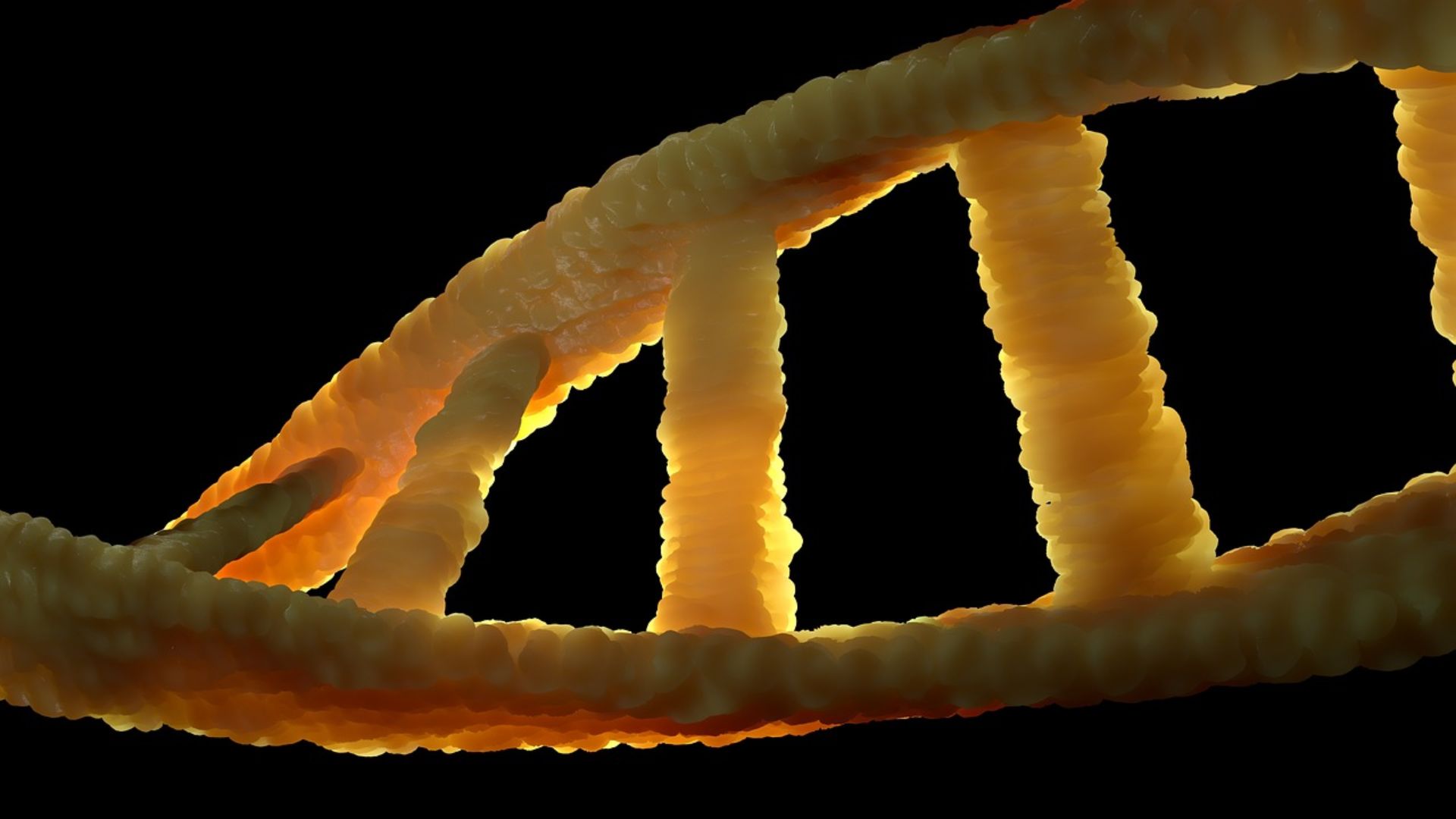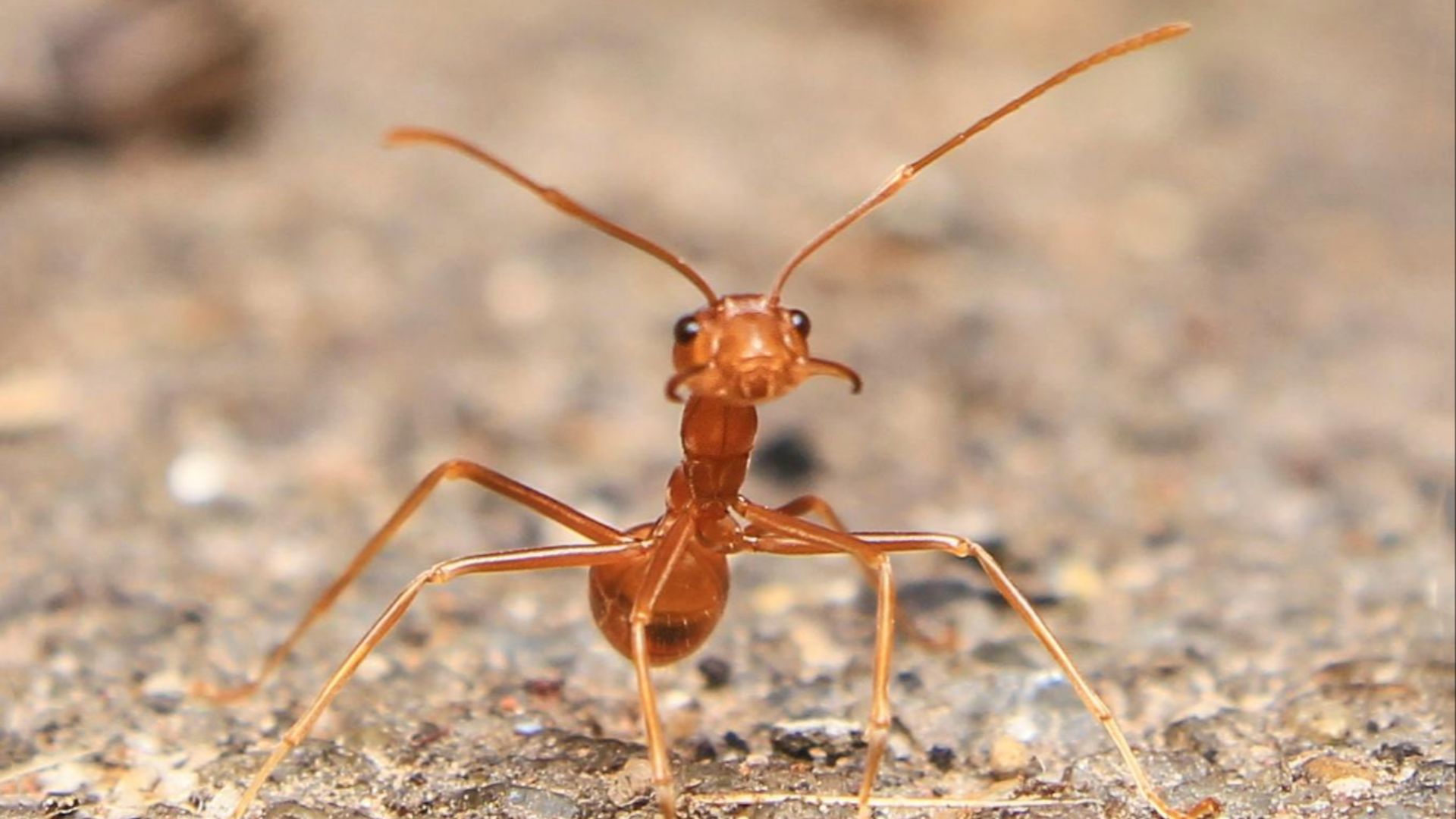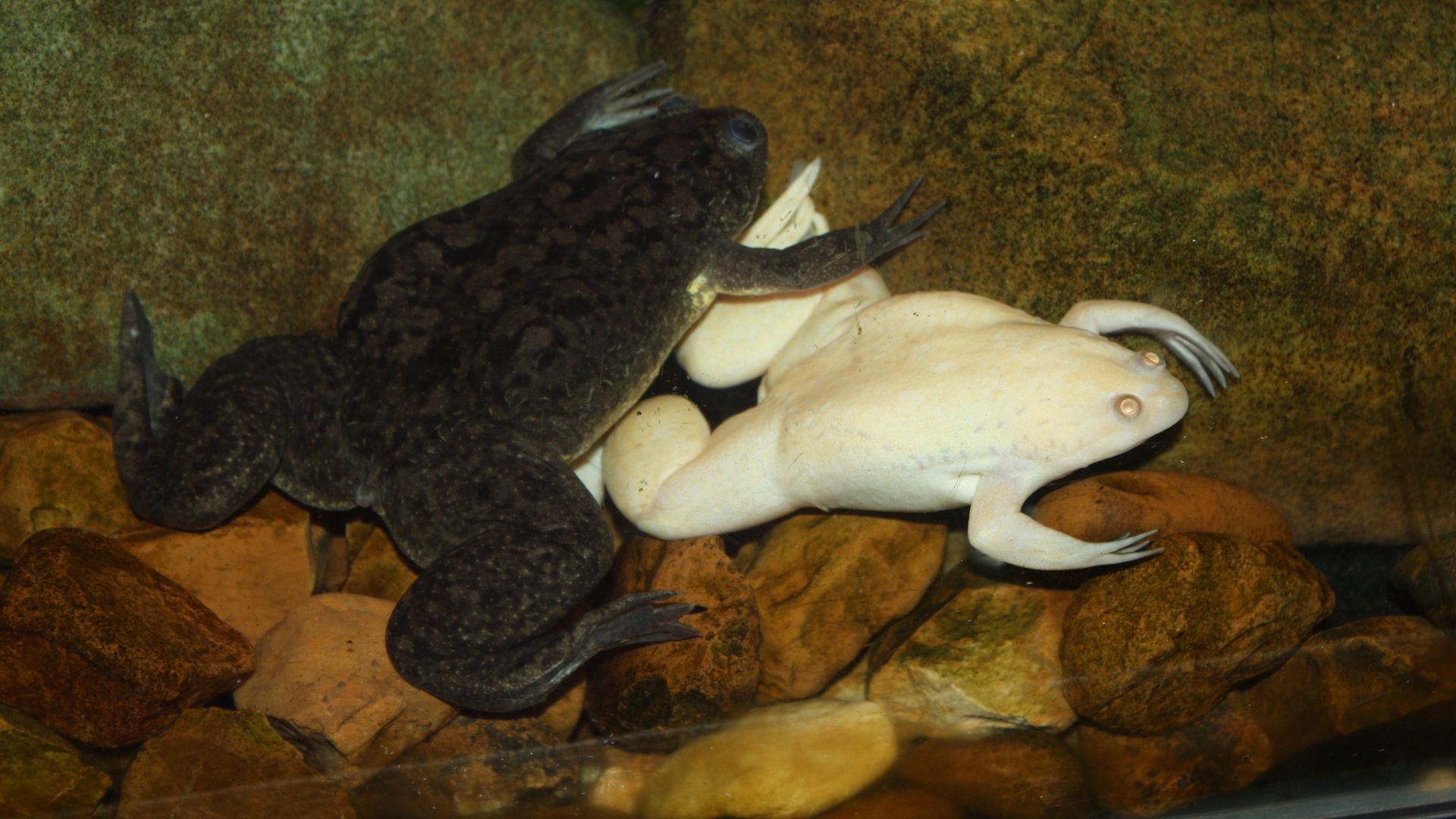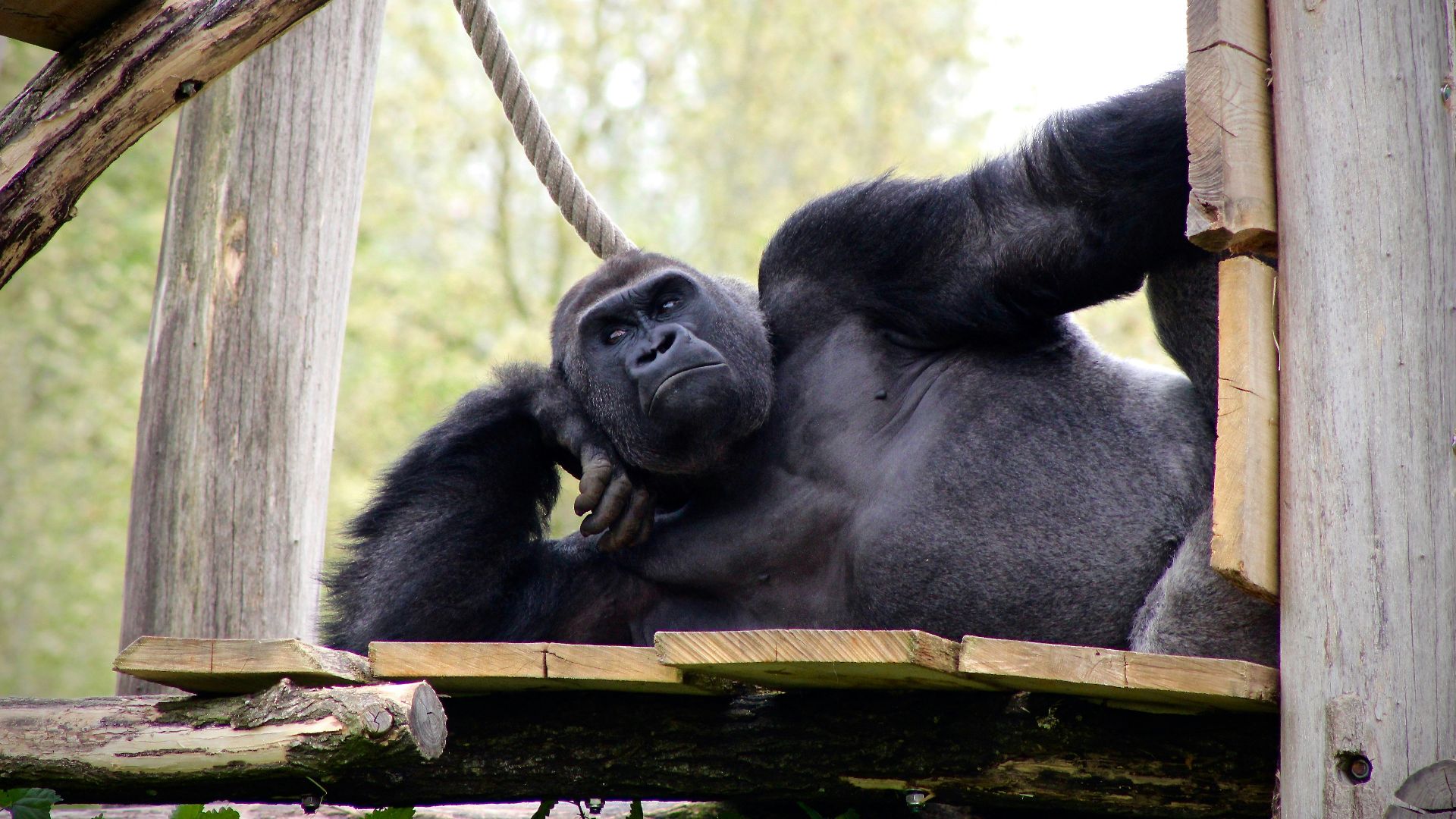“The art and science of asking questions is the source of all knowledge.”—Thomas Berger
It’s true—all of humanity’s scientific knowledge began by somebody asking a question and refusing to quit until they found an answer. Using this impressively simple method of pondering and investigating, human beings have gone from swinging on tree branches to flying planes and communicating on smartphones. That is some pretty amazing stuff!
But not everything scientists have ever investigated or discovered has been as serious and consequential as the inner workings of a space shuttle—sometimes things can get silly, weird, or just plain fun. For every person who asked whether humans could ever fly, there was someone else wondering what makes monkeys throw feces at each other, and we should be just as thankful for the second group as we are for the first! After all, without these people, what random tidbits of crazy yet true information would we have to impress strangers with at dinner parties? And without the ability to do that, how would we make any friends??
So let’s revel in our appreciation for the crazy and awesome people who had the audacity and creative initiative to ask these questions—by taking a look at what others felt were the most interesting science facts out there that most people don’t know about!
25. Long Lost Cousins
Mushrooms and humans are more closely related than mushrooms and plants.
24. Packing A Lot In
The DNA in a person’s body, when uncoiled, can stretch from Pluto to the Sun and back.
23. The Latest Styles
Rhinos shape their horns to a preference. Like a hairstyle. Some like it bending forward and if it gets too long that way can stop them from being able to eat. Usually need human interference at this point.
22. Who’s the Boss Around Here?
Your DNA built your body to serve its purposes, not the other way around.
21. You Better Watch Out!
A Gamma Ray Burst could come from space at basically any time and destroy all life on our planet and we'd never see it coming.
If you fell into a black hole your body would undergo what is known as spaghettification.
Bacteria in your body outnumber your own cells at a ratio of 1.3:1 (corrected from 9:1)
Even if you created a lightless vacuum unaffected by gravity, there would still be Zero Point Energy.
The LHC (Large Hadron Collider) accelerates Protons to 99.999% the speed of light.
I could go on all day!
20. The Money Maker
Most metals are silvery, but why is gold different? This is because the electron orbitals in gold's outermost "layers" are partially filled and because its electrons are moving really fast, which manifests itself in absorbance of blue light, making it yellower!
19. Quietly Watching
Plants can analyze the light spectrum and know from the amount of red and far red to total light if they're growing in the shadow of an object or another plant or even if there is a plant growing nearby that could eventually steal their light.
They respond by putting all their energy in rapid growth to keep their sunny spot- pretty rad, considering that they don't have a brain or any nerves but control it a via hormones.
18. Down to Size
A giraffe fact as long as a giraffe's neck:
The laryngeal nerve in all mammals branches off the vagus nerve (itself from above and behind the heart), loops through the aorta (still in the chest cavity) and then up to the larynx.
In early and modern small mammals this distance is minimal, but in the giraffe the nerve is effectively twice as long as it needs to be because it has to go all the way from the brain, down to the chest cavity, loop through the aorta and all the way back up the neck again to the giraffe's larynx.
It's a good argument for evolution because there are plenty of more sensible routes for that nerve to have taken, such as along with the facial nerves.
17. You Are What You Eat
Cardinals get their color from their food like flamingos.
16. Mistaken Identity
Your brain has a specific area dedicated entirely to recognizing human faces. This is why all animals of a certain species look virtually identical to us, but we can distinguish between very similar looking people almost perfectly. Also, damage to this part of the brain leads to some interesting and weird medical conditions like Prosopagnosia and Capgras Syndrome
 Peace Alberto Iteriteka, Pexels
Peace Alberto Iteriteka, Pexels
15. Picnic Baskets Beware
There are three species of ants that can recognize themselves in the mirror, thus showing some degree of self-awareness. Their faces were painted with blue ink and after seeing their reflection they tried to clean themselves from the stain.
14. Killing Two Birds With One Stone
A bird's beak is made from the same stuff as your fingernails.
13. Double the Trouble
It's possible to have opposite sex identical twins.
There are basically two types of twins: Fraternal is the most common. This is when two separate eggs are fertilized by two separate sperm, and although the twins share a womb and are born at the same time, genetically they're no different to any "non-twinned" siblings.
Identical or monozygotic twins are when a single egg is fertilized, creates a single zygote which then splits into two separate embryos, resulting in twins that are genetically identical.
However, it's possible (but extremely rare) that after the zygote splits, one of the embryos spontaneously drops the Y chromosome and develops as a female... and when I say extremely rare, there have only ever been ten confirmed cases of opposite sex identical twins in all of human history.
However, this is probably a good thing and in cases of opposite sex identical twins, the female is always born with Turner Syndrome, which results in stunted growth, lack of ovarian function, heart defects and a whole host of severe medical problems.
12. Reliable Sources
The only way a woman could 100% reliably make sure if she was pregnant or not was to have her pee injected into a female African clawed frog. If the woman was pregnant the frog would have its period in a timespan of 2-12 hours.
11. Special Talent
Giraffes can’t vomit.
10. Lurking in the Bushes
A lot of deadly diseases originate from bushmeat hunting in rural parts of Africa.
HIV and Ebola both did, because chimps have such similar DNA to humans, viruses can cross the species barrier easily. When hunting bush meat, the bushmeat (chimps) often fight back, biting their trapper, and often their blood gets into the hunters' cuts. Monkeys carried SIV (Simian Immunodeficiency Virus) and it hopped over into Humans, where a mutation allowed it to infect us.
Even scarier, they're finding tons of new strains of HIV in bush meat hunters in rural villagers in parts of Africa. Right now, HIV-1 and HIV-2 are the main HIV strains that infect humans globally, but more and more are evolving and emerging in these hunters.
9. Wait...What??
Roughly a quarter of all known species of mammals are bats.
1/2 are rodents. Pareto strikes again.
8. Special Occasion
If Betelgeuse, a fairly nearby giant star, goes supernova, it will light up our sky for about two months.
 NASA/CXC/U.Texas, Wikimedia Commons
NASA/CXC/U.Texas, Wikimedia Commons
7. Leader of the Pack
Wolf packs are not generally led by Alphas.
This behavior does exist, but is only displayed by wolves being held in captivity or in other situations where the normal social conventions breakdown (multiple, unrelated wolves living in close proximity). Under more natural circumstances wolf packs consist of a family group that will usually only have one adult male. Male offspring will generally leave to form their own packs upon reaching adulthood rather than fighting for dominance of the existing pack.
One of the men most responsible for the Alpha "myth" is a wolf ecologist named David Mech, who performed a study on wolves in captivity in the 1940s. He released a famous book The Wolf: Ecology and Behavior of an Endangered Species which described the Alpha behavior and heavily contributed to its popularity. Recently, in light of new evidence, David admitted that his original study was flawed. He has a website dedicated in part to helping debunk the myth and has tried numerous times to get his own book out of print. Unfortunately, the book's publishers refuse to cooperate.
Many sources will still refer to the parent wolves as Alphas but this is becoming less common, they are now generally referred to as either the breeding male or the breeding female.
6. The Good Life
Greenland sharks can live for upwards to 500 years.
 Hemming1952, Wikimedia Commons
Hemming1952, Wikimedia Commons
5. Complicated Process
If fatty tissue dies it undergoes a process called saponification. This is where your fat is turned into soap inside of you. Your body is then like wtf is this because soap isn't a natural product in the body and mounts an immune response.
Saponification is a necrotic process where the whole tissue dies... losing weight doesn't kill the fat cells, just metabolizes the fat shrinking the tissue. Necrotic causes include lack of oxygen to a tissue, toxins etc.
4. Getting Philosophical
In all animals taught sign language, not a single one of them has ever asked "why?"
3. Reclaiming Their Identity
Dinosaurs are not extinct. There is no phylogenetic reason to not classify birds as dinosaurs, and that is what they are. Birds are dinosaurs.
2. All You Ever Wanted to Know About Ants
Ants are just awesome though. Here are some more ant facts
Leafcutter ants don't eat leaves, they use the leaves to grow a fungus, which they eat. This fungus is only found in the ants' nest, nowhere else. New queens take a sample with them when they start their own colony. Leaf cutter ants produce a powerful antibiotic in secretions from their body to prevent the fungus from becoming infected.
Ants have specified job roles. One ant will be a nursery worker, another will work only in their garbage pile (yes, they have a specific area just for rubbish, and ants that don't work there, don't go there. They drop off their rubbish half way and the trash collectors take it from there to prevent cross-contamination).
Ants count their steps. Scientists gave a nest a source of food and once they had learned where it was they "modified" the ants' legs. Ants with longer legs went too far and ants with shorter legs came up short. The ratio of over/under shooting was equal to the ratio of old leg-length to new leg-length.
In the '50s a scientist wanted to observe how radiation affected mutations in ants so he set up a uranium source above an ants nest and left it there (simpler times). He came back six months later to find the uranium gone. The ants had stolen it to heat up the nest. There was no increase in mutations within the nest. I could go on, I did my thesis on ants and now they are my friends.
 Poranimm Athithawatthee, Pexels
Poranimm Athithawatthee, Pexels
1. The Ape in the Mirror
The Mirror Test is a controversial way of testing self-recognition in animals. The goal is to see if the animals can recognize the image in the mirror as themselves, rather than another animal. This is thought to be an indication of self-awareness and higher intelligence.
Gorillas stand out as the only Great Ape (Chimps, Orangutan, Bonobos, etc.) who consistently fail the mirror test. Some scientists took this to mean that gorillas were simply less intelligent than other Great Apes.
However, gorillas perceive eye contact as extremely aggressive. Because of this other scientists have speculated that gorillas fail the mirror test not because they're stupid but because they won't spend enough time looking at the image in the mirror to recognize it as themselves.

































